Robotics Lab Setup in Schools — Complete Guide & Equipment List
Here’s something We’ve noticed after visiting dozens of schools: walk into a robotics lab where students are actually building, testing, and troubleshooting their robots, and you’ll see something special.
If you’re reading this, you’re probably thinking about bringing that same energy to your school. Maybe you’re a principal who keeps hearing about STEM initiatives, or a teacher who’s tired of watching students memorize formulas without understanding why they matter. Either way, you’re in the right place.
This guide breaks down everything you need to know about setting up a robotics lab the real stuff schools actually need, not just vendor wish lists. We’ll cover space planning, realistic budgets, and how to actually get this approved by your administration.
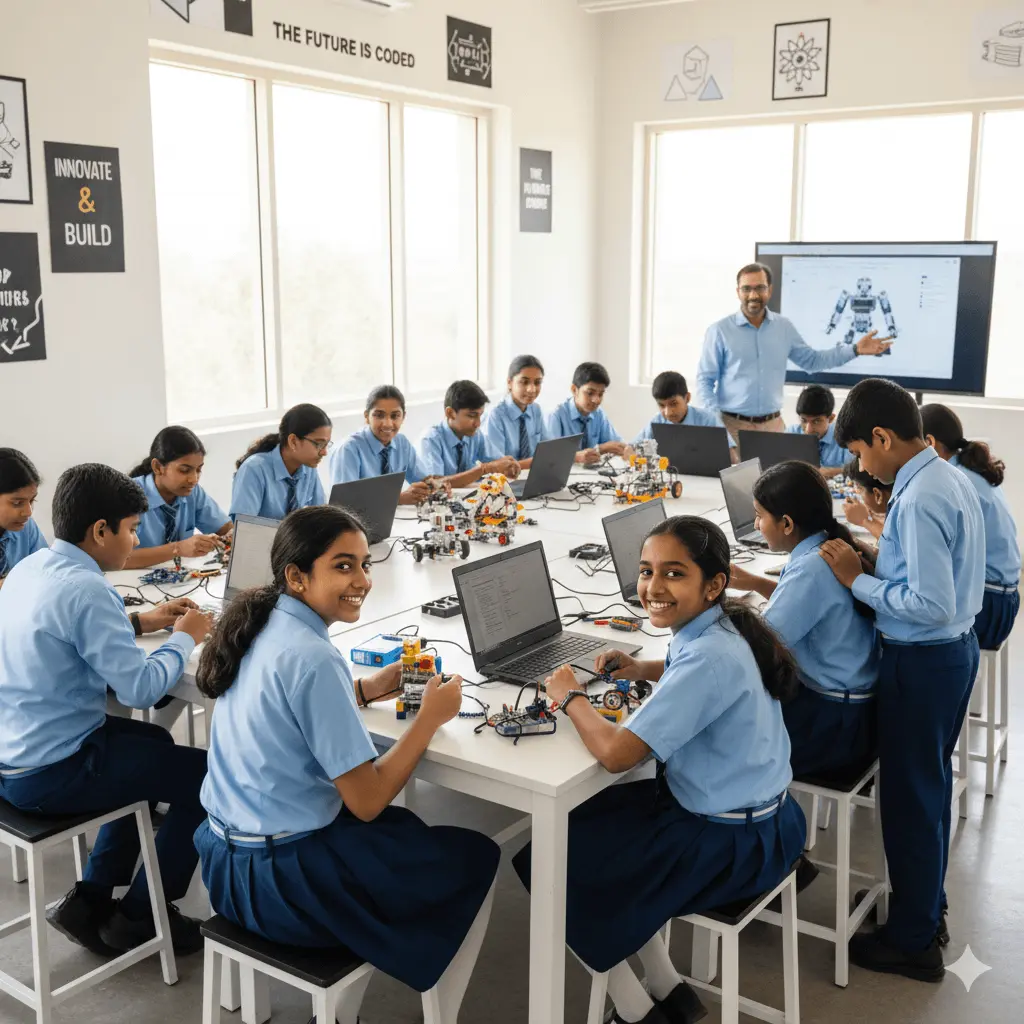
20+ Schools Served
Ongoing Support for 1 Year
Expert Free Consultation
Why Every School Needs a Robotics Lab
Look, We get it. Another initiative, another thing to squeeze into an already packed schedule. But here’s the thing about robotics labs they’re not just another tech fad.
Think about what happens in a traditional math class. Teacher explains quadratic equations, students take notes, everyone hopes they remember it for the test. Now imagine students programming a robot to navigate a maze, calculating angles and velocities because their robot literally won’t move without the right numbers. Which lesson sticks?
The Skills Gap Nobody's Talking About
The World Economic Forum says 65% of kids in elementary school right now will end up in jobs that don’t exist yet. Sounds scary, right? But here’s what we know: those future jobs will need people who can solve problems they’ve never seen before, work with technology that hasn’t been invented, and collaborate across disciplines.
That’s exactly what happens in a good robotics lab. Students aren’t just learning to code they’re learning to think.
Real Benefits We've Seen Firsthand
After working with schools across the country, here’s what actually happens when you introduce a quality robotics program:
Future-Ready Skills
Math suddenly makes sense Geometry isn't abstract anymore when you're calculating robot arm movements.
Real-World Learning
Quiet kids find their voice. Give them a technical problem to solve, and suddenly they're team leaders.
Better Outcomes
College applications get stronger. Robotics team experience stands out in a sea of generic extracurriculars.
One teacher told our team: “My robotics students started tutoring other kids in math class. They weren’t trying to show off they just finally understood it well enough to explain it differently.
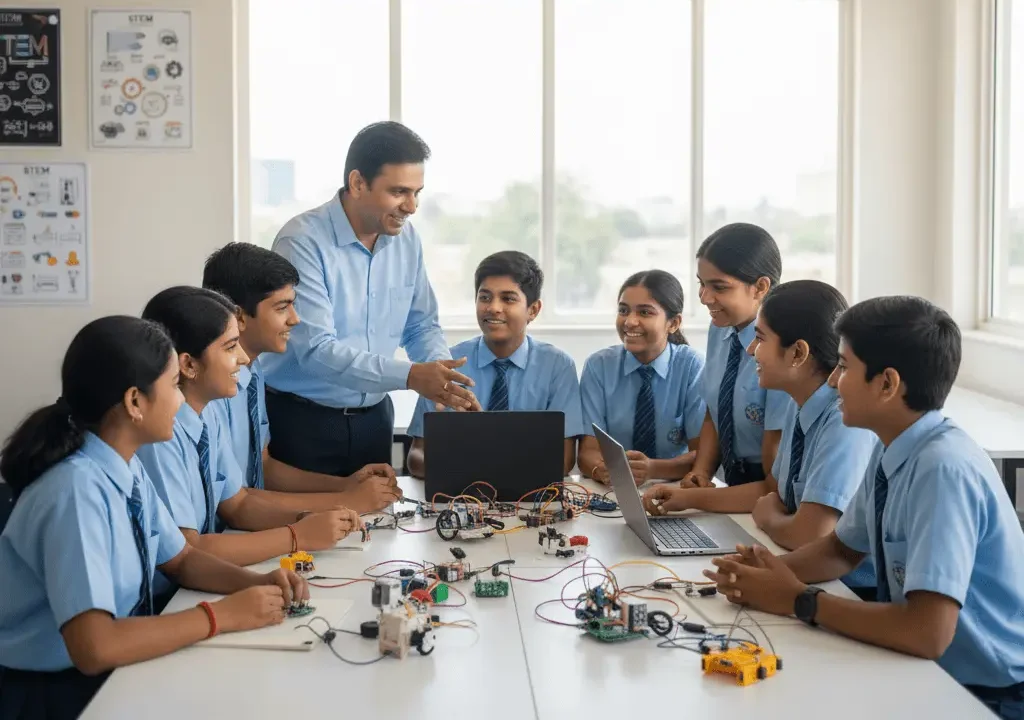
The Equity Piece
Here’s something important: robotics labs can level the playing field. Not every kid has a computer at home or parents who work in tech. But show up to school, and suddenly everyone has access to the same robots, the same tools, the same opportunities. I’ve watched students from low-income backgrounds discover talents they didn’t know they had, simply because someone gave them access.
Robotics Lab Equipment List for Schools
Building a comprehensive robotics lab requires careful equipment selection across multiple categories. This detailed breakdown helps you understand what you need for each grade level and learning objective.

Step-by-Step Robotics Lab Setup Process
Okay, let’s get practical. You can’t just order a bunch of robots and call it a lab. Trust me, schools have tried. Here’s the approach that actually works:
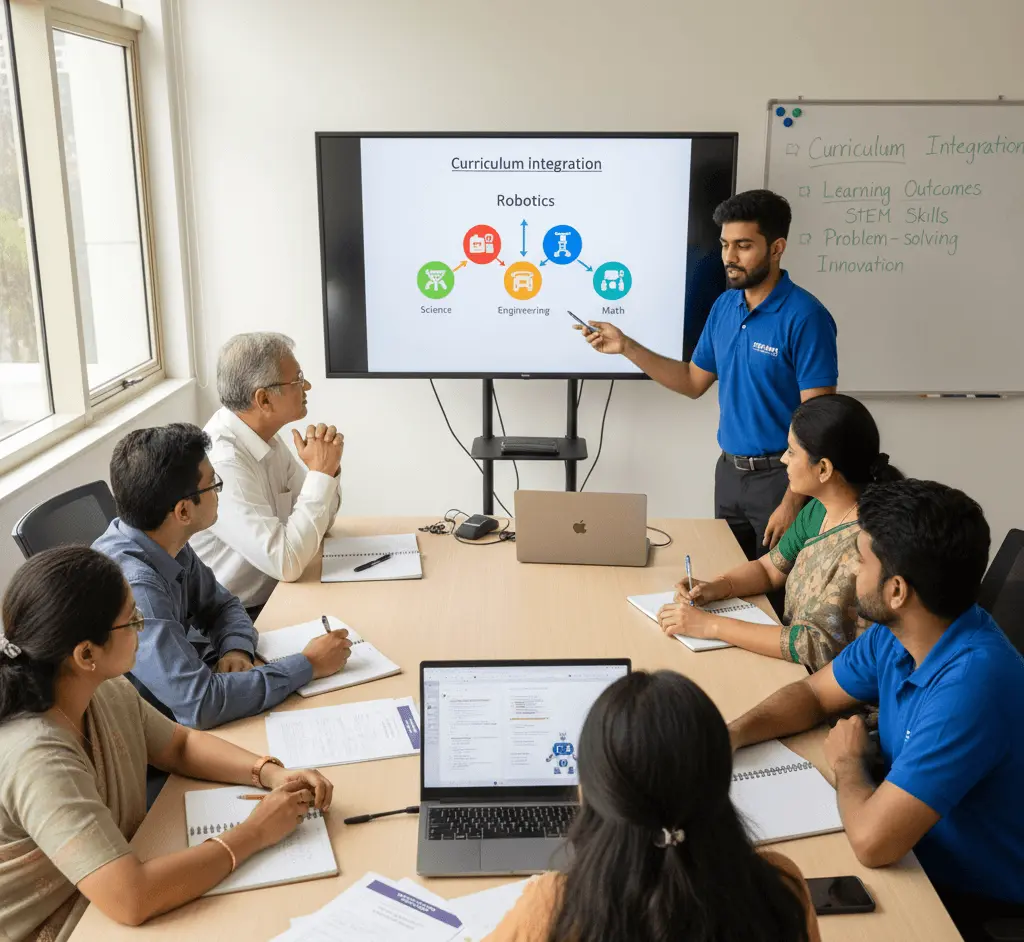
First question: who’s this lab for? Because a lab for 3rd graders looks completely different from one for high schoolers preparing for engineering college.
Get Clear on Your Audience
- Elementary kids need colorful, immediate feedback, and success within 20 minutes. Think LEGO robots and simple block coding.
- Middle schoolers can handle more complexity and longer projects. They're ready for sensor integration and text-based coding.
- High school students want challenges. Give them open-ended problems with multiple solutions.

Here’s where schools often mess up. They convert a regular classroom and wonder why it doesn’t work. Robotics labs need different thinking.
Size Matters (But Not How You Think)
You don’t need a massive space, but you do need the right layout. Minimum 600 square feet for 15-20 students. More is nice, but layout beats size every time.
Think in Zones
Your lab needs distinct areas:
Building Zone: Tables where students assemble robots. Needs good lighting, power access, storage nearby.
Testing Zone: Open floor space where robots can move around. At least 12 feet by 12 feet, no carpet if possible (wheels work better on hard floors). This is where the magic happens—and where things break, so keep it away from expensive equipment.
Storage Zone: Not sexy, but critical. Messy storage = lost pieces = angry teachers = program dies. Invest in good bins, labels, and maybe a sign-out system.
Teaching Zone: Somewhere you can demo new concepts to the whole class. Screen or projector visible from everywhere.
This is where schools either nail it or waste thousands of rupees. The key? Start with less than you think you need, buy quality, and expand based on what students actually use.
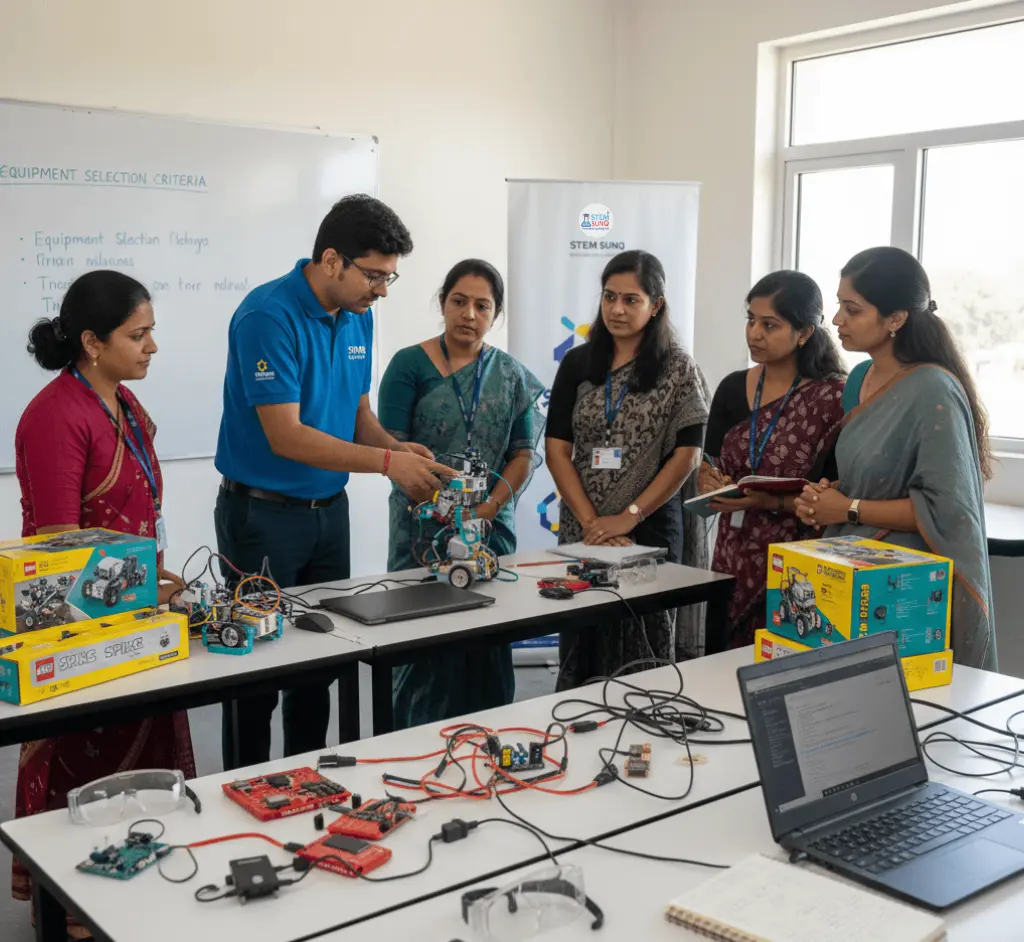
This is where schools either nail it or waste thousands of rupees. The key? Start with less than you think you need, buy quality, and expand based on what students actually use.
Don’t buy the “complete lab package” until you know what your students need. Every school is different.
Cost Estimate & Budget Planning
Let’s talk real numbers. I’ll give you three scenarios based on what actually works at different school sizes.
Small Lab (10-15 students)
Basic equipment, 10 starter kits, Total: ₹1.2 Lakh – ₹1.5 Lakh
Medium Lab (20-25 students)
Mix of beginner and intermediate kits, Total: ₹2.5 Lakh – ₹2.8 Lakh
Advanced Lab (30+ students, competition-ready)
Everything across all levels, multiple activity materials. Total: ₹3.5 Lakh – ₹4 Lakh
Download Your Free Robotics Lab Setup Proposal (PDF)
Here’s your shortcut: we’ve already done the hard part.
You need to convince administrators, budget committees, maybe even school board members. They’re going to ask about costs, space requirements, curriculum integration, maintenance, training—basically everything we just covered.
Instead of starting from scratch, grab our Robotics Lab Setup Proposal PDF. It’s the same document we’ve used to get dozens of labs approved.
What’s actually in it:
✅ Equipment lists broken down by grade level (copy-paste into your budget request)
✅ Cost breakdowns they can understand
✅ Lab layout examples with measurements
✅ Curriculum mapping templates
Get it Now Completely FREE:
Our Robotics Lab Setup Services
We’ve set up 25+ school robotics labs. We’ve seen what works and what doesn’t. More importantly, we’ve fixed what doesn’t work.
What we actually do:

Consultation & Planning
We sit down with your team teachers, tech coordinators, administrators. Figure out your actual needs, not what some sales rep thinks you should buy. Design a lab that works for your specific students and curriculum.
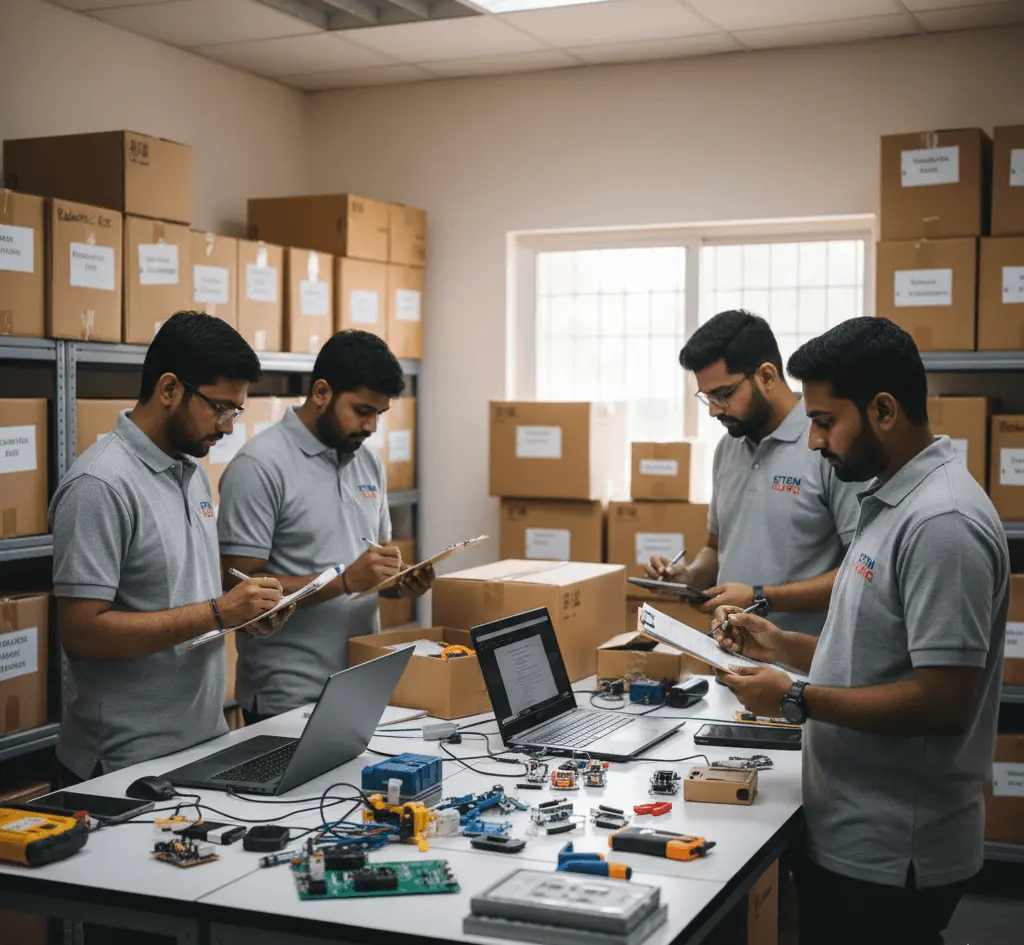
Equipment Procurement
We source everything at competitive prices. You're not paying retail, and you're not getting cheap knockoffs that break in three months.
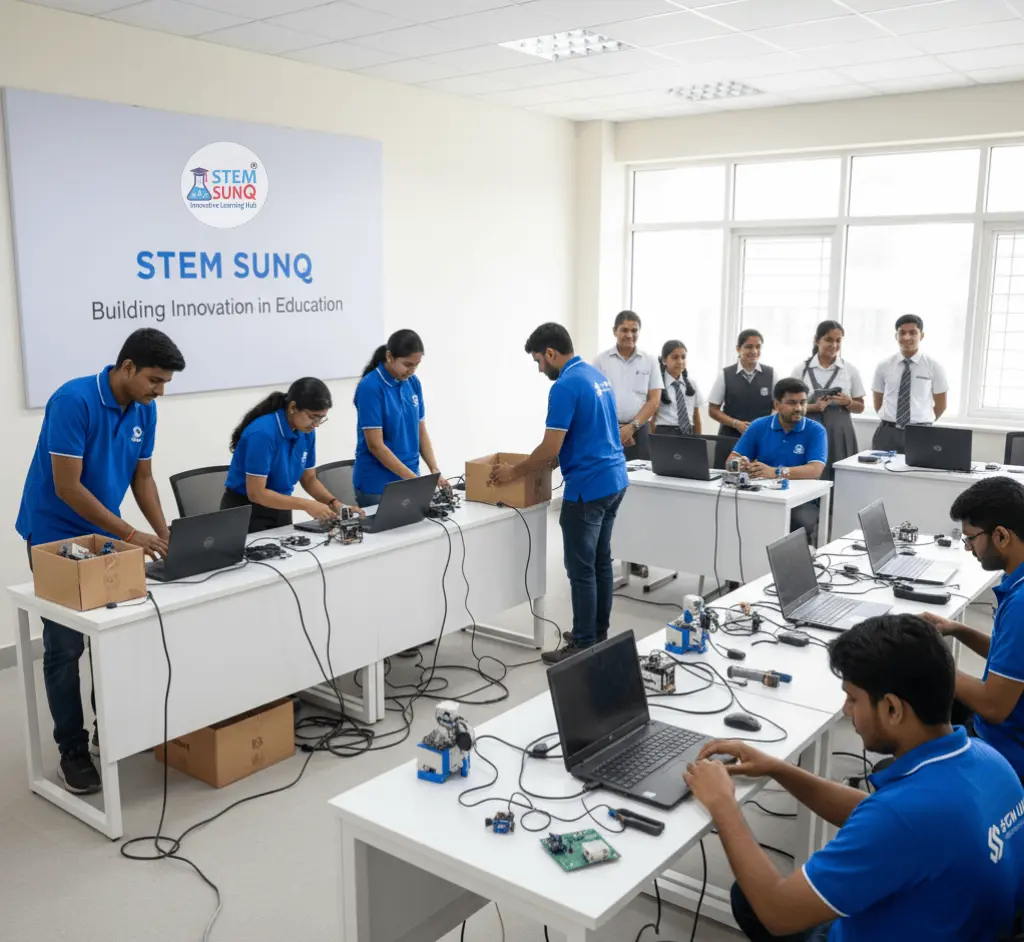
Professional Installation
Our team handles everything from furniture assembly to computer configuration to making sure every robot charges properly. You get a turnkey lab, not a puzzle to solve.

Teacher Training & Professional Development
Your teachers don't need robotics PhDs. They need practical training: how to run this kit, how to troubleshoot common problems, how to manage 25 students with 12 robots. That's what we teach.
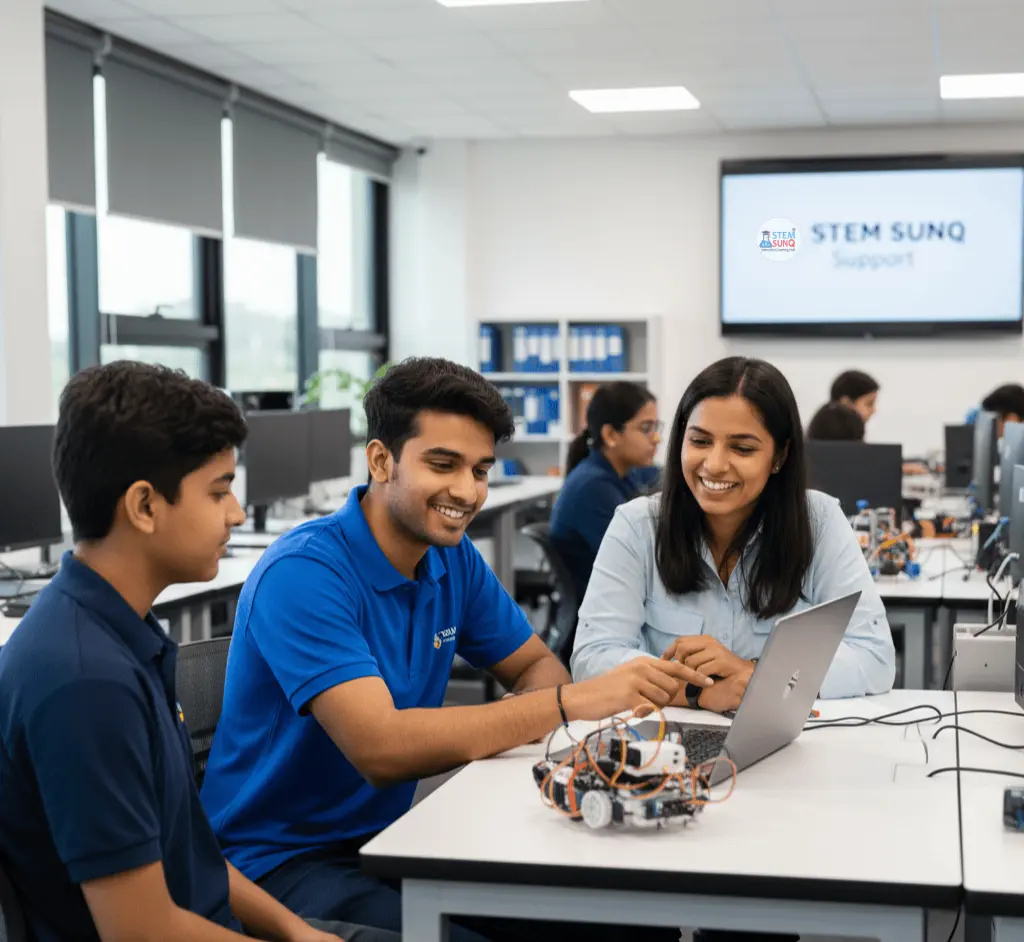
Curriculum Resources
Lesson plans, project ideas, assessment rubrics—all aligned with standards. No more "here's a robot, good luck.

Ongoing Technical Support
And things will go wrong. Batteries die, motors stop working, software updates break things. We're here to fix it so you can keep teaching.
Want to Talk About your Specific Situation? No Sales Pitch, Just Honest Conversation about What Makes Sense for your School.
To confirm your FREE Consultation just message this “Robotics Lab” on Whatsapp by clicking the above button. We will shortly connect with you.
Frequently Asked Questions (FAQ)
Perfect. That's actually most of our clients. Our training is designed for teachers with zero robotics background. We've trained 70-year-old teachers who still use flip phones. If they can do it, your teachers can too. Plus, students often teach teachers—it's actually a great reversal that kids love.
6-12 weeks from "let's do this" to "students are building robots." That includes planning, ordering, delivery, setup, and teacher training. Rush jobs possible if you've got a hard deadline.
Both options work. Many schools start by integrating robotics into existing STEM classes—spend three weeks on a robotics unit during physics or math. Others create dedicated robotics electives. We help you figure out what fits your schedule and curriculum.
Absolutely. Some of our best success stories are small schools. You don't need 100 students to justify a lab. Even 15 kids getting hands-on STEM experience is worthwhile. Scale everything down fewer kits, smaller space, lower cost. The impact per student often runs deeper at small schools.
Yes! That's actually smart. Pilot with one grade, work out the kinks, show results, then expand. Less risky, easier to manage, and you build experience before scaling up.
Ready to Build Your School Robotics Lab?

Here’s the thing: you already know whether this is right for your school. You’ve seen students disengage during traditional lessons. You’ve watched talented kids lose interest in STEM because it felt abstract and boring. You know your students deserve better.
A robotics lab isn’t a magic solution. But it’s a proven way to make learning tangible, engaging, and memorable. It gives students hands-on experience with technology that matters. It helps them see themselves as engineers, programmers, problem-solvers.
Most importantly, it works. Not because robots are cool (though they are), but because it fundamentally changes how students interact with learning.


